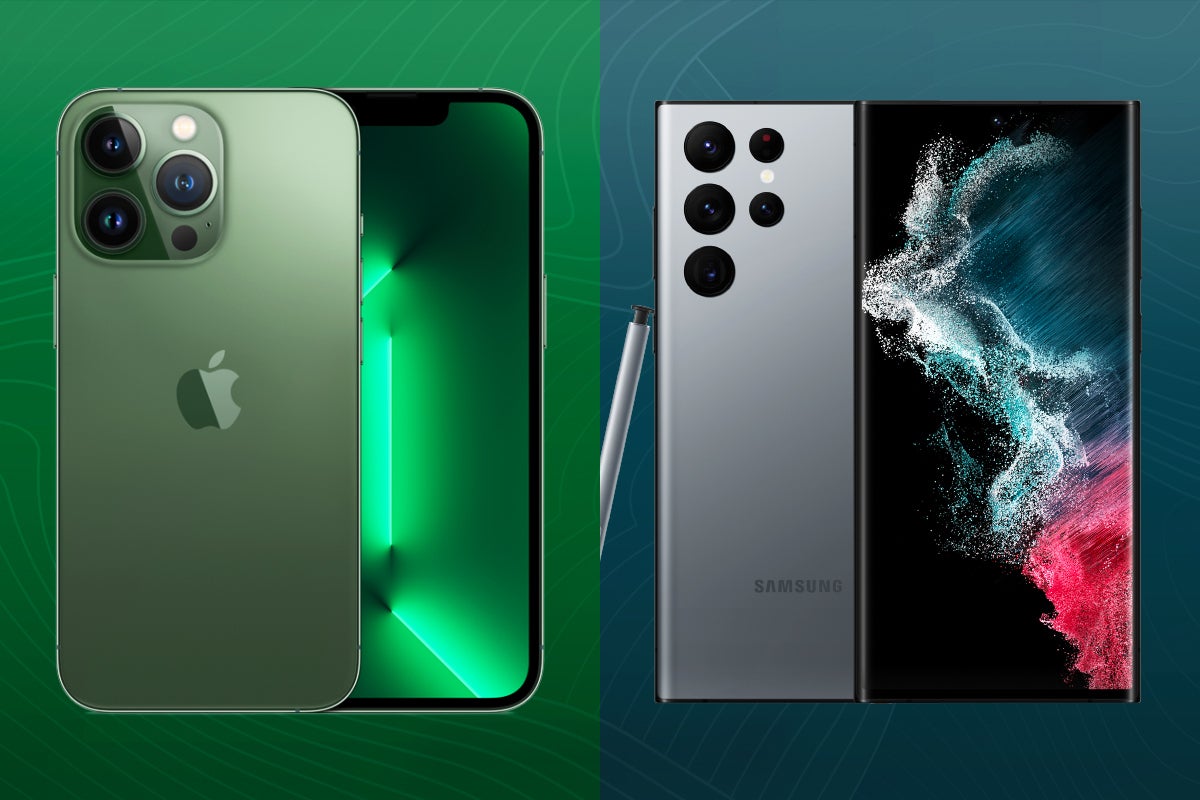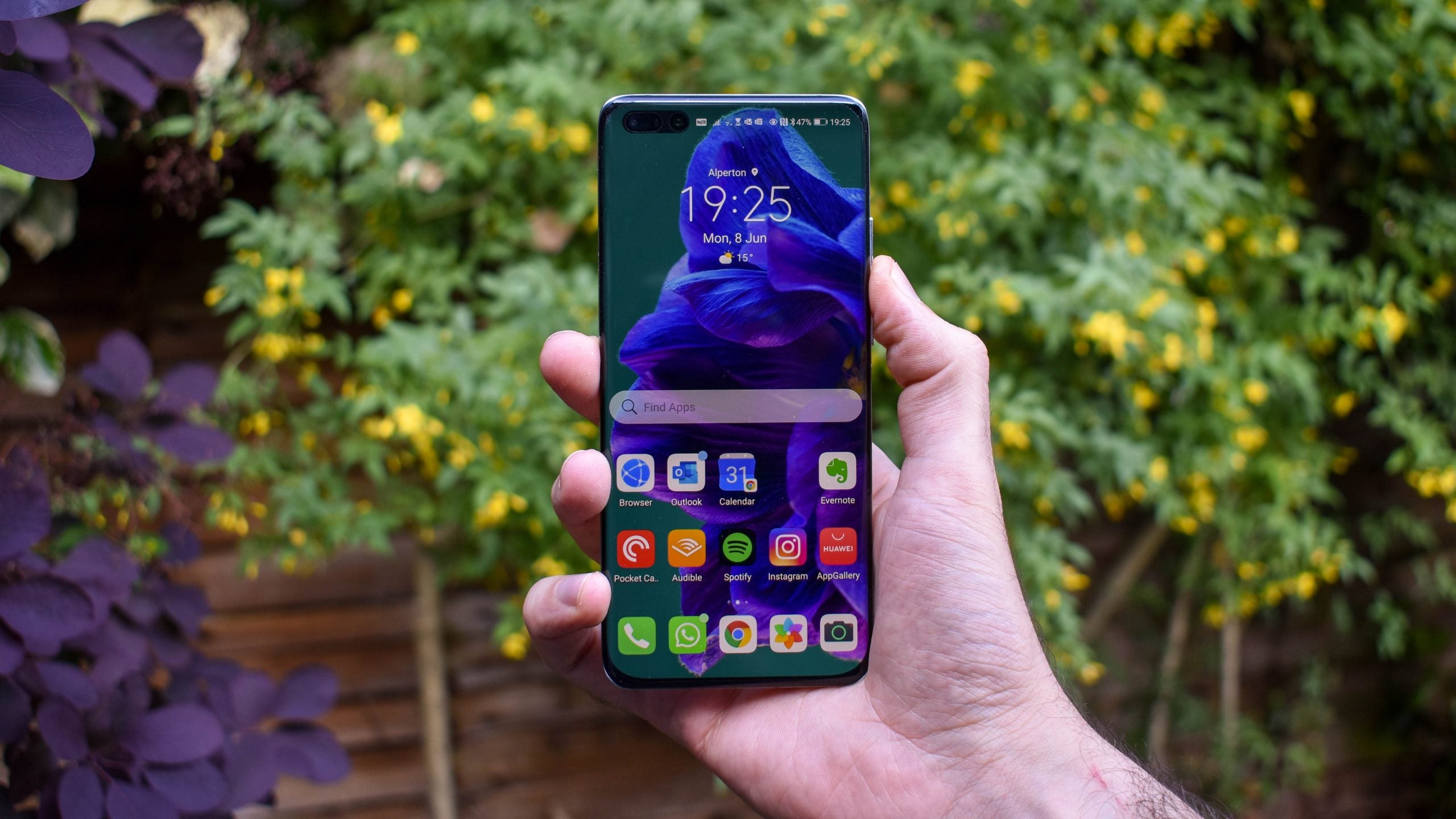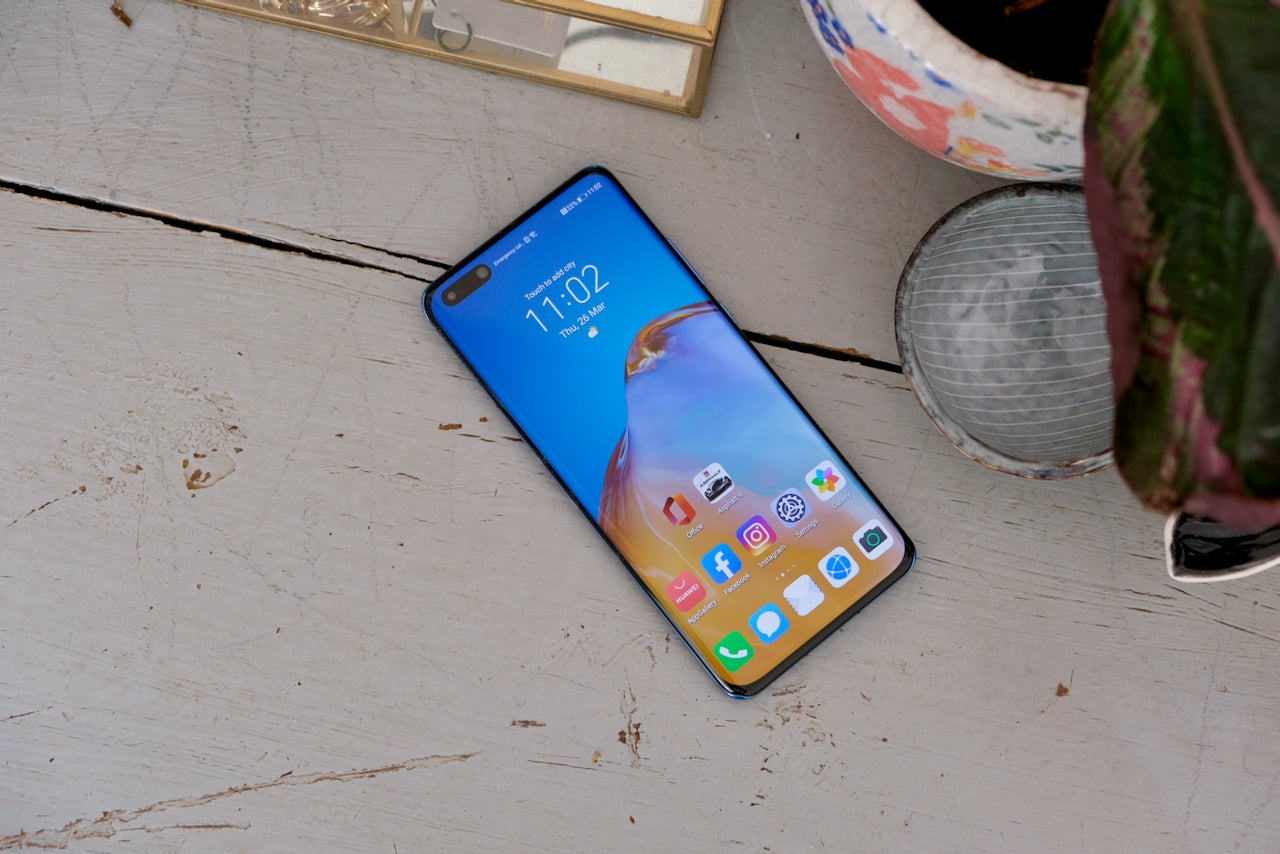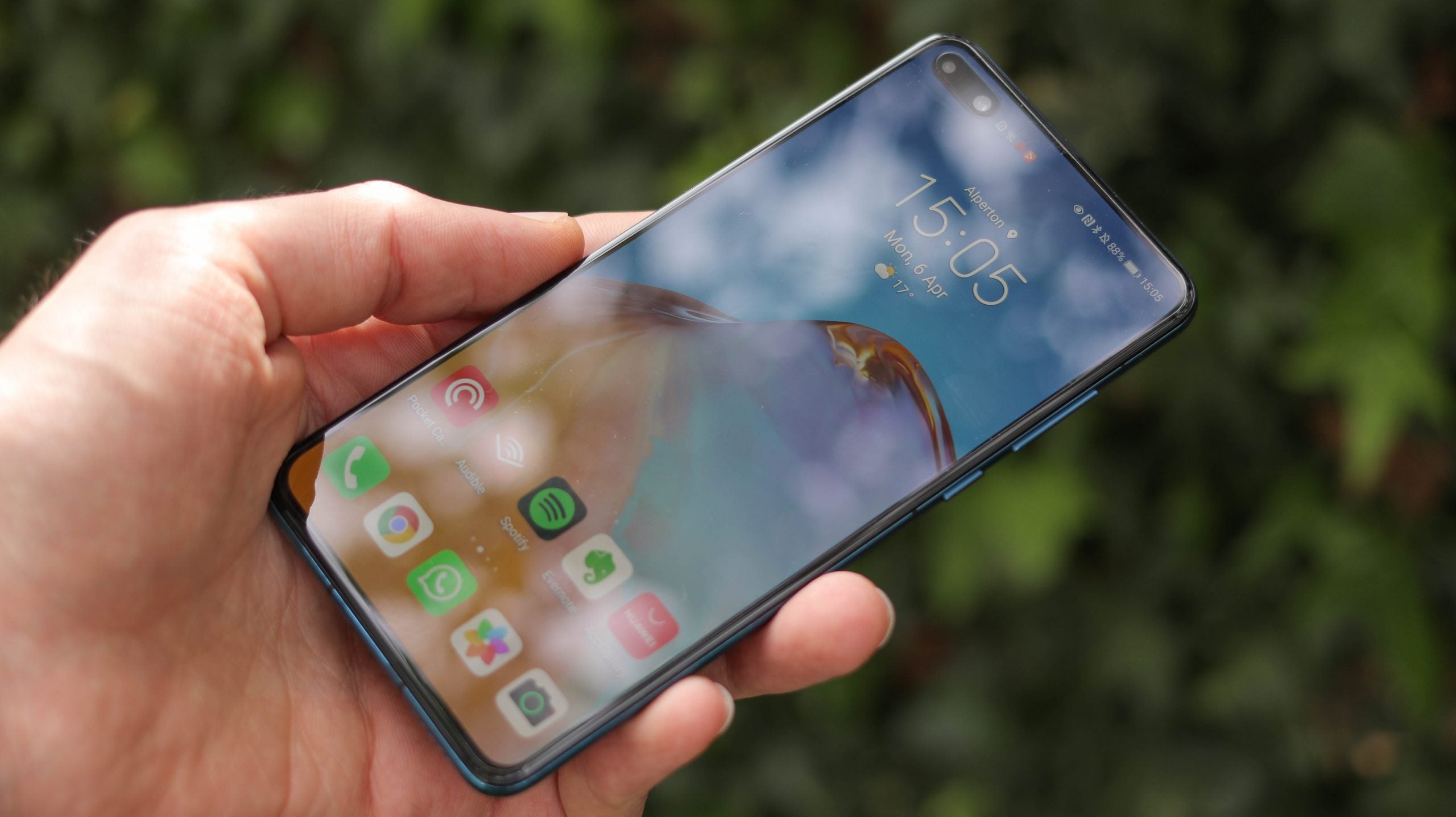Huawei P40 Pro Review
Huawei P40 Pro Review
No Google, but lots to get excited about

Verdict
Fantastic hardware meets challenged software; the P40 Pro is the best camera phone you can get for £899, and the phone’s design is beautiful. Despite some elegant software highlights too, however, the limitations when it comes to Google will likely turn many off. If Huawei can improve this in the phone’s lifetime, then the P40 Pro will be a winner.
Pros
- Class-leading camera
- Good battery life
- Elegant design
- Great if you don't want Google
Cons
- No Google Services mean, for the price, you'll probably want to look elsewhere (which is a shame)
- Massive hole punch
- App Gallery needs serious improvements quickly
Key Specifications
- Review Price: £899
- 6.58-inch OLED curved display
- Kirin 990, 5G
- 4 rear cameras, including main 50MP sensor
- 4200mAh battery
- 40w wireless and wired charging
While every smartphone maker, from OnePlus to Samsung to Sony, seems to be ramping up its flagship phone prices in 2020, Huawei’s P40 Pro costs exactly the same as the P30 Pro did, £899.
With a new camera setup that blows everything in its price bracket out of the water though (yes, including the OnePlus 8), what’s the catch? You guessed it, there’s one, and it rhymes with Moogle.
The P40 Pro may look similar to the P30 Pro, but it’s an across-the-board improvement. It swaps out the primary camera for an even more specced out unit, clocking in at 50MP and packing a Mate 30 Pro 40MP ultra-wide-angle module. Huawei’s also updated its design, with a four-sided curve across the front and rear glass. The Pro’s power and storage have been boosted, and it even boasts the fastest potential 5G speeds of any flagship around right now.
Despite these accolades, it also costs £899. While that isn’t cheap, it’s a lot less than many top-enders out now, with even recent entrants to the western market being significantly more brazen with their pricing – £1099 for an Oppo Find X2 Pro anyone?
This puts the Huawei P40 Pro (256GB) at exactly the same price as the OnePlus 8 Pro (256GB) and makes it significantly less expensive than the iPhone 11 Pro and Galaxy S20 Ultra, which both cost well over £1000.
Huawei clearly knows that, despite its rise to glory in recent years, it’s once again a challenger brand, given the fact 2019’s US-China trade wars left the tech giant without access to Google Mobile Services in its smartphones. If you’re willing to live with the sacrifices you’re getting one of the best phones around and a true best camera phone champion.
Huawei P40 Pro design – A touch of frost
One thing’s for sure, for the most part, you can’t knock the Huawei P40 Pro’s design – this is Huawei at its best.
At 6.58 inches, the Pro is neither too big, nor is it too small, sitting between the Galaxy S20 and the S20 Plus, and iPhone 11 Pro and 11 Pro Max. That means, for most, it will be just about comfortable enough to manage one-handed. Despite the front glass on the P40 Pro being curved on all-sides, the screen itself isn’t too curved – nothing like the Mate 30 Pro, so accidental presses aren’t an issue.
At 9mm thick, the P40 Pro makes the 7.9mm thin Galaxy S20 5G feel like a waif, but as we’ll come onto, that camera is worth the extra heft.
The Pro’s styling is both familiar and fresh. Its display glass, which curves pretty drastically on all four sides, is held in place by a buffed metal frame that peaks at the phone’s corners. Huawei says this adds robustness to the device, and it makes sense – more metal on the corners means if you drop it, and glass is less likely to come into contact with the ground. This frame gives the impression the screen is ‘spilling over’ and is a welcome point of differentiation. The general curviness and smoothness on all sides mean the phone nestles so comfortably in your hand and feels comfortable.

The P40 Pro’s buttons are on the right, while all the other points of interest are at the base – a mono-speaker, SIM card tray, and a USB-C port. Around the back, there’s a big ol’ camera bump. It looks better than the bump on the S20-series, with its Leica branding and landscape design – and the heft can be explained away by the P40 Pro’s zoom capabilities.
Available in five colours and two finishes, you can pick up a glossy P40 Pro in Deep Sea Blue, Ice White or Black, or in a frosted, matte, iPhone 11 Pro-esque Silver Frost, or Brush Gold.
Huawei P40 Pro camera – Class-leading imaging for the price
The Huawei P40 Pro’s primary camera is almost identical to that of the P40, but the P40 Pro features OIS. The shared 50MP Ultra Vision sensor was impressive on its smaller sibling, and on the P40 Pro, it’s best-in-class.
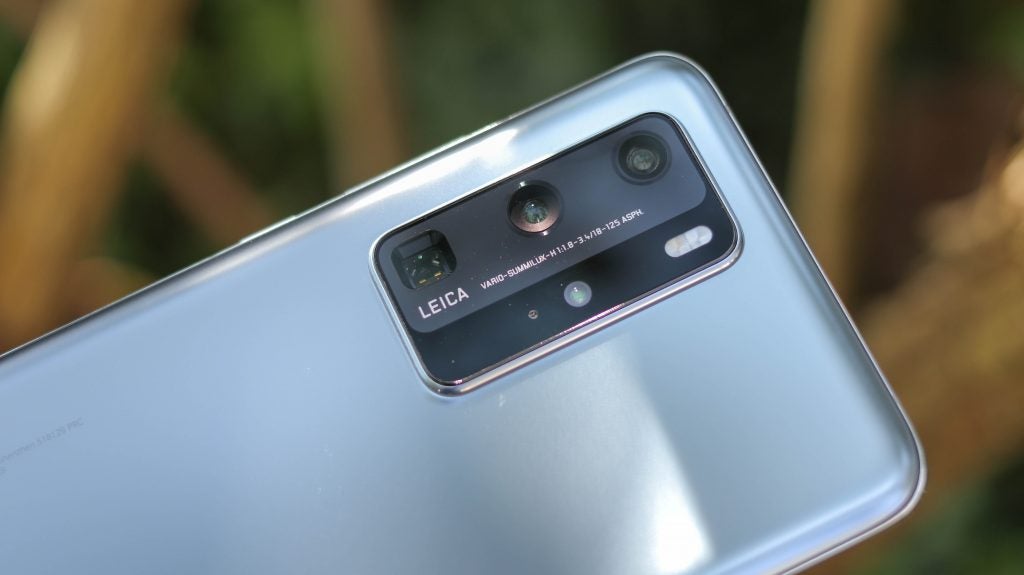
An f/1.9 aperture lens with a 23mm focal length combines with large, 2.44-micron combined-pixels when taking 12MP images – that’s huge for a phone. Bigger pixels usually mean better photos, so the Pro’s off to a great start there.
With 5x optical zoom, equating to a 125mm focal length, the P40 Pro gets you a fair bit closer than the zoom on the S20 and S20 Plus. However, it can’t topple the S20 Ultra, even though the photo quality is ultimately better on Huawei’s flagship.
There’s also a mighty 40MP ultra-wide camera with an f/1.8 aperture and an 18mm angle of view. As with the Mate 30 Pro, this doubles up as the video capture camera, so can grab super-steady footage with no cropping. Additionally, it packs autofocus, so can lock in on close-up objects like a boss. Finally, there’s a time of flight (ToF) depth sensor for better background defocus effects and more.

Performance in poor light is impressive, as you’d expect from a Huawei phone



Photos captured on the primary camera are exceptional. The sensor’s 50MP resolution produces 12MP images that grab loads of detail, building on the 10MP shots older Huawei flagships capture.
Dynamic range is also excellent for the most part, though shadow boosting can be a little overzealous. Saturation and sharpening are relatively tapered compared to processing on older Huawei phones and are scaled right back when compared to snaps from the Galaxy S20-series. It leans towards warm tones, but that’s not necessarily a bad thing. Additionally, whatever the lighting, the P40 Pro’s camera gets excellent results in automatic mode.
The phone’s strength extends across all three cameras. The telephoto module is very comparable to Oppo’s excellent Find X2 Pro. However, when it comes to clarity, Huawei edges slightly ahead for photos, and Oppo wins out on video at a roughly 5x zoom. The S20 Ultra gets you closer to the action than both.
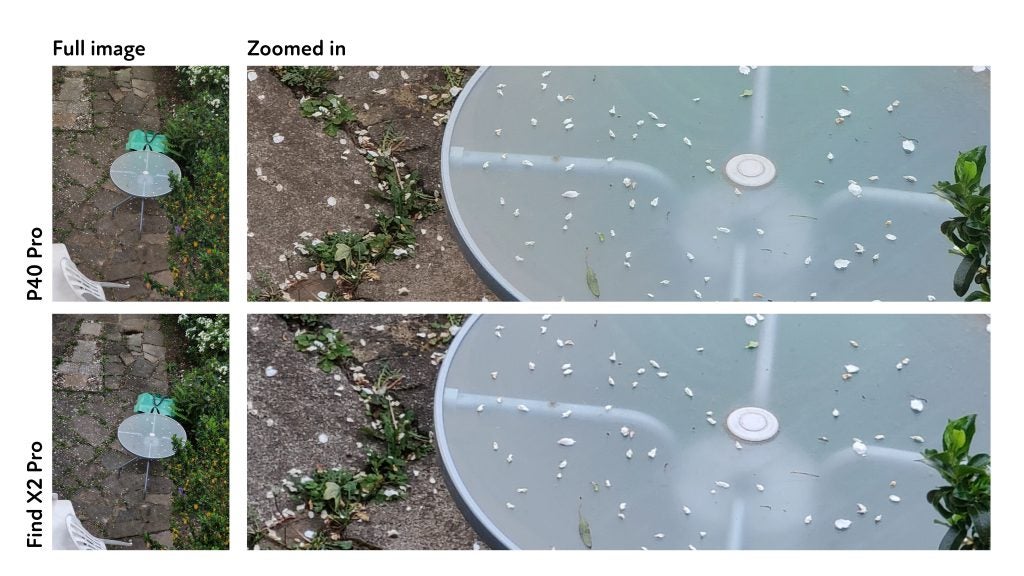
As for the ultrawide camera, it’s a champion with plenty of resolution, plenty of versatility thanks to its macro mode, and that 18mm focal length also gets plenty in the frame. Some smart modes get rid of elements in the shot and help with edits, but even without them, the P40 Pro’s camera is categorically the best you can get for its price, and depending what you want from your photos, the best you can get, period.

Detail is sharp and colours are great
The same can be said of the selfie camera, which also stacks up well in real-world use. Its 32MP resolution is ample, and the primary sensor is paired with a secondary depth camera for more secure face unlocking and depth effects. It also packs autofocus and shoots up to 4K front-firing video, which looks great.
The P40 Pro’s video capture looks good across resolutions, climbing up to 4K, 60fp. Footage captured on the main camera looks stellar, is well stabilised, and any fans of more natural levels of saturation and punch would prefer Huawei’s video style to Samsung’s.
Huawei P40 Pro screen – Smooth and curvy
Huawei’s latest flagship screen is strange but good. It’s 19.5:9 aspect ratio means it’s tall, though, with a 1200 x 2640 resolution, it sits between two industry standards – FullHD and QuadHD. Should you really care about any of that though? Not really. The main thing is, it’s bright, it’s sharp, and it looks beautifully punchy.
Unlike the main competition, the P40 Pro doesn’t feature a 120 Hz refresh rate display, instead, capping out at 90Hz. This puts Huawei in line with last year’s OnePlus phones, but still ahead of the iPhone 11 Pro.
The screen supports HDR10 content, packs OLED technology and has a 441-pixel density – sharper than the P40 or P30 Pro, less sharp than the OnePlus 8 Pro and Galaxy S20-series.

Viewing angles on the P40 Pro are excellent as is brightness, making for easy viewing indoors and out, and while we would have liked a smaller punch hole, there’s almost no bezel on this thing around the sides. Also, swiping in across the curved glass sides, top and bottom is such a treat – no harsh edges to scrape your thumb over, just rounded smoothness.
Battery life – Fast charging and a full day of use
The P40 Pro aced our battery benchmark tests, with competitive screen-on time and fast charging.
Compared to other flagship phones, Huawei’s finest performs better than the S20-range, delivering better screen on-time at comparable brightness levels. A 30-minute episode on Netflix only knocked the battery by a few per cent, and 20 minutes of gaming by a few more. We never switched from 90Hz to 60Hz screen refresh rate to save battery because we never needed to.
With 40W charging, the P40 Pro powers up from 0-100% in about 50 minutes, though slows down charging overnight to preserve long term battery quality. That being said, half an hour of charging will top up the Pro by 80%, so if you’re in a rush in the day, are covered. Additionally, it features fast 27W wireless charging too and is the only phone we’ve seen to also offer equally fast reverse wireless charging.
Performance and software – Fast and cool, but no Google
Powered by a Kirin 990 paired with 8GB RAM, the Huawei P40 Pro isn’t the most powerful 2020 flagship smartphone around, but it’s still incredibly capable.
Everything from gaming to multitasking, right through to photo editing was nippy. The phone’s internal storage clocks in at 256GB which is ample, and it supports Huawei’s Nano Memory cards too.
With 5G data speeds, fast WiFi and NFC, not to mention a responsive under-display fingerprint scanner and fast face unlocking, nothing major is missing here when compared to pricier flagships.

The Huawei P40 Pro runs Android 10, with the brand’s own interface, Emotion UI over the top. It isn’t on the same footing as other Android phones though, thanks to the US imposed Huawei Google ban. In short, Huawei phones are restricted when it comes to Google; this means no Play Store, and other limitations when using third-party apps.
The situation is improving, with Here Maps, owned by BMW now providing Huawei phones with a decent mapping service available in its AppGallery. That said, getting apps on the phone isn’t an issue, to be honest. Of course, you can use Huawei’s AppGallery, but third-party app stores are better equipped, even if they aren’t always as polished (or protected). We found everything we needed in APKMirror, including Google Maps and Chrome, which both work fine on the P40 Pro. Alternatively, you can download apps directly from the host sites – Facebook and WhatsApp make their APKs (app files) available, for example. This takes a bit of scouting around, and updates aren’t automatically managed like they are with APK Mirror or other app stores, including Aurora.
We’re more concerned that some apps just won’t work on Huawei’s new phones. Take Uber, for example, or the Marvel Comics Unlimited App, or even Asana, a popular project management tool. None of these will work without Google Services right now – and that also includes many banking apps.
Google apps that won’t run on the P40 Pro include Docs, Drive, Gmail, the Play Store and YouTube or YouTube Studio. Additionally, Google Meet, Calendar – none of those work either, so if your business is set up as a G Suite organisation, then a new Huawei phone won’t make any sense.
For anyone less beholden to Google, therefore, the P40 Pro’s software is really good 95% of the time once you’ve got it up and running. The camera UI, which was the main thing we used, is nippy, the core UI is smooth and stable, Huawei has supplemented Android 10 with some great multitasking features, and it’s actually easy to find apps for it. That said, you really do need to know what you’re getting into before picking one up.
Should you buy the Huawei P40 Pro?
The P40 Pro is definitely not cheap, but it’s still a great value flagship when you consider its hardware. A fantastic camera meets excellent design and a beautiful screen – it’s a robust offering for £899. Huawei’s even bundling a free Huawei Watch with it right now too; it clearly knows it needs to compete on the value front given everything going on, and that’s precisely what it’s doing.
The main reason not to recommend the P40 Pro, is, unsurprisingly its lack of Google services. Check out this review’s software section for more. Google fans or anyone bound into its ecosystem should hold off buying one – and it extends beyond Google’s own apps.
If that doesn’t put you off though, and you want what could be the best camera phone on the market for a certain kind of user – and hands-down the best camera phone at the P40 Pro’s price, then check it out. As for anyone consciously trying to uncouple from Google’s mighty grip – the P40 Pro is the best phone you can get right now.
These are the best Android phones: from Samsung to Oppo
FAQs
The P40 Pro has an IP68 rating, giving it resistance to water for a limited period
There is no Google Play store installed on the P40 Pro and most Google services and apps won’t work
It runs on Android 10 with Huawei’s EMUI modifications
Specifications
How we test phones
We test every mobile phone we review thoroughly. We use industry standard tests to compare features properly and we use the phone as our main device over the review period. We’ll always tell you what we find and we never, ever, accept money to review a product.


